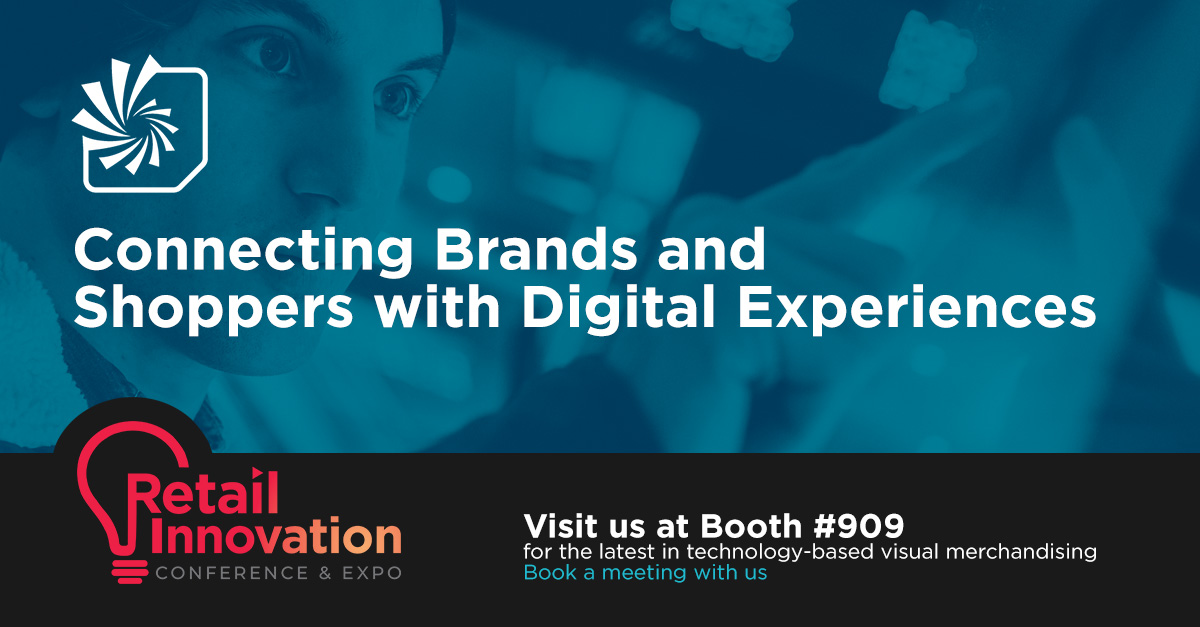In-Store Digital Displays and the Moment of Purchase
Digital signage can start influencing the customer experience before they even set foot in the store. Beginning with a digital screen that entices the customer from the street to enter the store, in-store digital displays can direct customers to
different departments and help them find what they’re looking for. Along the way, in-store digital displays can share the brand story and attract attention to popular items.
In addition to the overall store experience, your digital signage can also influence the customer at the moment of purchase. Here’s how.
The moment of purchase—a two-step process
First, let’s define what we mean when we say moment of purchase. It’s actually two moments. The first is when the customer is at the product display and making the decision to make a purchase. The second moment is at the register when the guest is completing that purchase. Within these two moments, retailers get several opportunities to use in-store digital displays to influence the customer and close the sale.
Step One: The product display
How much can digital signage at the product display really affect the customer’s decision to purchase? Well, beyond the customer’s existing motivations to buy—a carefully researched purchase vs. an impulse buy—there are many ways in-store digital displays can reduce friction in the process and encourage the customer to make the purchase.
Create awareness and educate the customer. Awareness starts by drawing attention to the product display and sharing product information. For a complex product, this could be instructional content that demonstrates how to use it. Answer questions about the item. Or, if the screen is interactive, have a way to summon customer support, so the customer can talk to a team member.
Increase basket size by highlighting similar or complementary products. Use the in-store digital displays near one product to draw attention to other products that are smart add-on purchases.
By highlighting these complementary products, you not only increase average basket size, you improve the customer experience by offering guests a product that will increase their enjoyment of the one they are already buying. Cross-selling is already common with products that have a short shelf life, like in the grocery and restaurant industries, though the practice applies to all retail.
You see this every time you stop at the prepared food counter in the grocery store. You’re waiting to buy a sandwich, and the digital display notifies you that you can add a premium ingredient for a small upcharge. And the rotisserie chickens are on sale today. Odds are good that you upgrade your sandwich and pick up a chicken for dinner. Or when you’re ordering using the interactive menu at a restaurant. When the menu suggests a side or a drink, do you get it? Probably. In these examples, the customers get something they want, and the store gets something it wants: increased profits and happy customers.
Step Two: The checkout
The second moment of purchase occurs when the customer is checking out at the register. With an audience that’s essentially captive, the checkout is a prime location for in-store digital displays and longer content. Studies show that digital screens at the register displaying engaging content can reduce customers’ perceived wait time by up to 36%, because time spent doing nothing feels longer than time spent doing something.
The register is a good place to promote loyalty programs and financing, highlighting store credit cards and payment terms. Not only do you have the customer’s attention, you could be removing a financial barrier to the purchase.
The registers are also a place to show content that reinforces the brand story to inspire customer affinity and loyalty. You can also use content to encourage repeat traffic from customers.
Repeatedly, shoppers are telling retailers both explicitly and implicitly that they now place a priority on a great guest experience that connects the in-store with the digital. We’ve written a white paper that dives deeper into the topic, but a great place to start is by removing the friction that leads up to a purchase. You can do that and encourage brand loyalty, repeat visits, and future purchase by strategically using your in-store digital displays.
Share this
You May Also Like
These Related Stories

Choosing Digital Signage Content Types to Suit Your Needs

Feeding the Beast: A Digital Signage Content Program for the Long Haul


